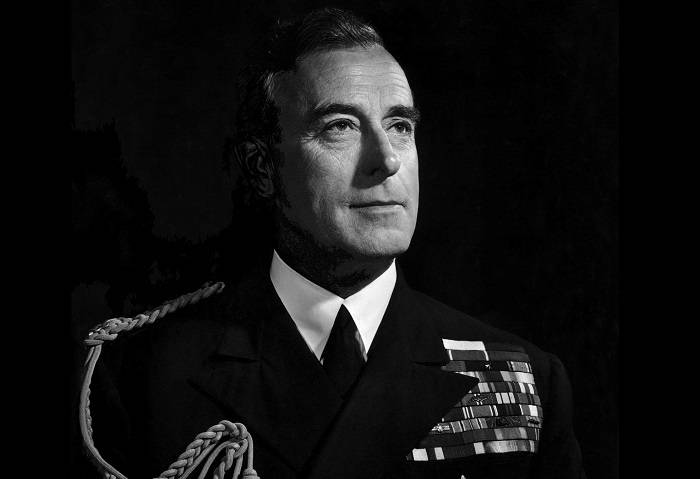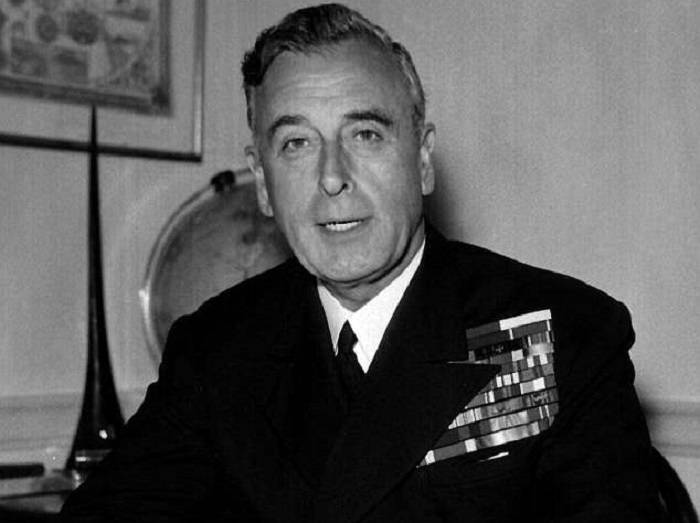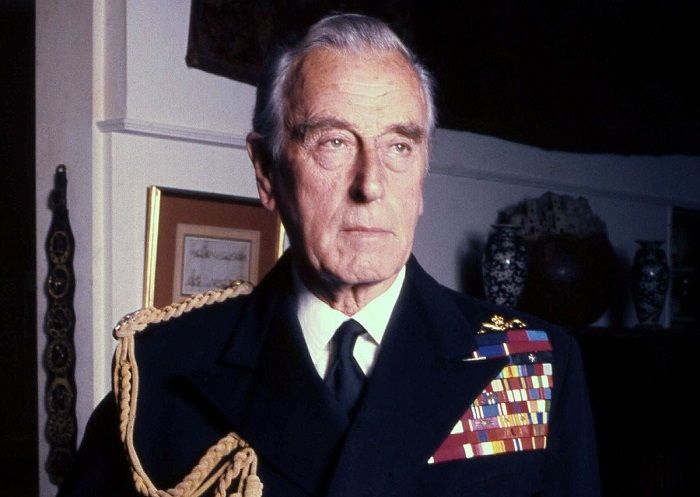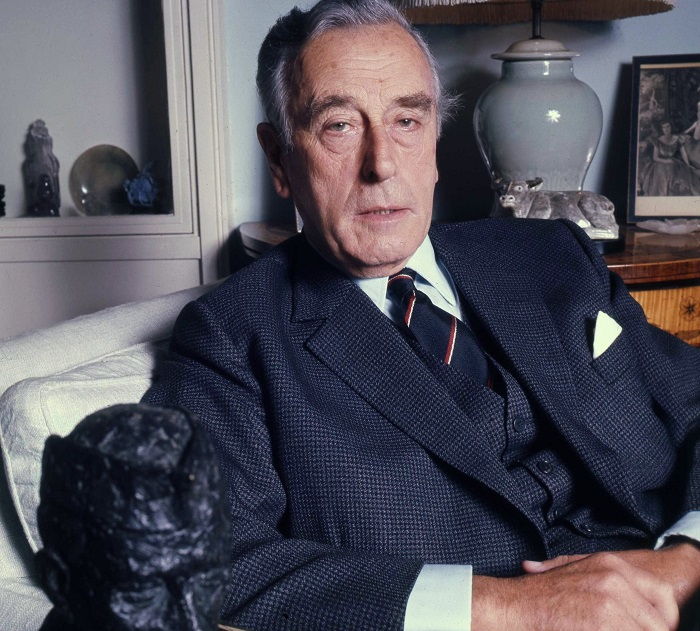Fast Facts
Born: 25 June 1900
Place of Birth: Windsor, U.K.
Parents: Prince Louis of Battenberg and Princess Victoria of Hesse
Siblings: George, Louise, Alice
Spouse: Edwina Cynthia Annette Ashley
Children: Patricia Knatchbull, Pamela Hicks
Education: Lockers Park School, Hertfordshire; Royal Naval College, Dartmouth; Christ’s College, Cambridge; Portsmouth Signals School; Royal Naval College, Greenwich
Death: 27 August 1979; assassinated by the IRA in Mullaghmore, Ireland
Admiral of the Fleet, Louis Mountbatten, 1st Earl Mountbatten of Burma was an officer of the British Royal Navy and a statesman of eminence. Related to the British royalty, he served with distinction in the Royal Navy and subsequently as the Supreme Allied Commander, South East Asia Command oversaw the defeat of the Japanese offensive towards India in the Second World War. As India’s last Viceroy and first Governor-General, he supervised the transition of the country from a British colony to two independent nations, India and Pakistan. Mountbatten became the First Sea Lord, then served as Britain’s Chief of the Defence Staff and was the Chairman of the NATO Military Committee. He was assassinated by the Provisional Irish Republican Army in 1979.

Image Credit : https://karsh.org/photographs/lord-louis-mountbatten/
Early Life
Louis Francis Albert Victor Nicholas Mountbatten was born on 25 June 1900 in Windsor, U.K. as the youngest of the four children of Prince Louis of Battenberg and Princess Victoria of Hesse. With Queen Victoria being his great-grandmother and as an uncle to Prince Philip, he shared very close links with the British royalty. When World War One broke out, Louis’ father was the First Sea Lord, however, he was forced to resign in the wake of anti-German sentiments and changed the family name to Mountbatten that sounded less-German, in 1917.
For the first 10 years of his life, ‘Dickie’, as he was known to family and friends, was tutored at home and then sent to Lockers Park School in Hertfordshire. In May 1913, he enrolled at the Royal Naval College, Dartmouth. After the end of First World War, in which he saw action, he attended the Cambridge University.
Early Career
In July 1916, Mountbatten joined the battlecruiser ‘HMS Lion’ as a midshipman and saw action the very next month. As the First World War drew to an end, he was transferred to battleship ‘HMS Queen Elizabeth’. On 13 October 1918, he was appointed Executive Officer of ‘HMS P. 31’, a small warship and was promoted to sub-lieutenant on 15 January 1919.
After spending a couple of terms at Christ’s College, Cambridge studying English literature, he joined the battlecruiser ‘HMS Renown’ in March 1920 and proceeded on a tour of Australia, during which, he was promoted as a lieutenant on 15 April 1920. In March 1921, he joined battlecruiser ‘HMS Repulse’ and accompanied the Prince of Wales to India and Japan on a royal tour. In January 1923, after surviving the deep defence cuts that forced more than half of the officers of the Royal Navy to leave, he was posted on the battleship ‘HMS Revenge’ in the Mediterranean Fleet.
In August 1924, he joined the Portsmouth Signals School and then the Royal Naval College, Greenwich to study electronics. In 1926, Mountbatten joined the battleship ‘HMS Centurion’ in the Reserve Fleet and was promoted as Assistant Fleet Wireless and Signals Officer of the Mediterranean Fleet in January 1927. On 15 April 1928, he was again promoted as lieutenant-commander and in July 1928, he returned to the Signals School as Senior Wireless Instructor. He was posted to battleship ‘HMS Resolution’ after being promoted as commander on 31 December 1932. He received his first command, the destroyer ‘HMS Darling’, in 1934 and in July 1936 joined the Naval Air Division of the Admiralty. On 30 June 1937, he became a Captain and in June 1939 given command of destroyer ‘HMS Kelly’.

Image Credit : http://www.dailymail.co.uk/news/article-5664539/Royal-baby-tribute-Lord-Louis-Mountbatten.html
Second World War
With the outbreak of Second World War in September 1939, Louis Mountbatten was appointed the commander of 5th Destroyer Flotilla and led a number of daring missions including the evacuation of the Allied Forces engaged in the ‘Namsos Campaign’ in May 1940. After ‘HMS Kelly’ was torpedoed off the Dutch coast by the Germans, he held his command from the destroyer ‘HMS Javelin’ till he was able to re-join the repaired ‘HMS Kelly’ in December 1940. Unfortunately, on 23 May 1941, ‘HMS Kelly’ was sunk by the German dive bombers during the ‘Battle of Crete’. Mountbatten captained the ‘HMS Illustrious’ in August 1941.
On 27 October 1941, he was made the commander of Combined Operations—a British War Office set up during Second World War to harass the Germans by means of naval and army raids. Mountbatten was credited with the success of the ‘Bruneval Raid’ on a German radar installation and the ‘Raid at St. Nazaire’ that destroyed a German-controlled dock in France. However, the raid on the port of Dieppe was a controversial failure with massive casualties, especially of Canadians that lead to frosty relations between Mountbatten and Canadian veterans.
Mountbatten was appointed by Churchill as the Supreme Allied Commander South East Asia Command. The highlight of his tenure was the Japanese surrender of Burma and the surrounding region in September 1945. In May 1946, South East Asia Command was disbanded and Mountbatten returned to England as a rear-admiral.

Image Credit https://upload.wikimedia.org/wikipedia/commons/thumb/f/f0/Lord_Mountbatten_Navy_Allan_Warren.jpg/1200px-Lord_Mountbatten_Navy_Allan_Warren.jpg
Viceroy of India
On 20 February 1947, Clement Attlee, acknowledging his experience of South-East Asia and his Labour Party sympathies, appointed him the Viceroy of India. His task was to ensure the transition of India to independence latest by 30 June 1948. Even though he had instructions to keep India united, he discovered the situation to be extremely volatile. Muhammed Ali Jinnah, the leader of the Muslims, was unyielding on creating a new Muslim nation, Pakistan, despite the complications of partitioning states with mixed populations like Bengal and Punjab. Mountbatten concluded that the partition of India was unavoidable and set a date for the transfer of power to the Indians with the hope that the fixed timeline would convince every one of his and the British government’s earnestness of making independence for India a reality.
With this announcement, all Indian leaders, with the sole exception of Mahatma Gandhi, consented to the partition of India. Mountbatten advanced the date of the partition to 15 August 1947 from June 1948. A boundary committee under Sir Cyril Radcliffe drew a map marking the borders of India and Pakistan and 14 million people crossed over to the side of their choice amidst vast disruption and loss of life. After the night of 14-15 August 1947 when India and Pakistan attained independence, Mountbatten remained in India until June 1948 as India’s first governor general. His offer to act in a similar capacity in Pakistan was spurned by Jinnah who only knew too well of his lack of support, faith, and emotional acceptance of the concept of Pakistan as envisaged by the Muslim League.
Later Career
After leaving India, Louis Mountbatten became the commander of the 1st Cruiser Squadron in the Mediterranean Fleet. In April 1950, he became the Second-in-Command of the Mediterranean Fleet and held the rank of Vice-Admiral. Two months later, he became Fourth Sea Lord at the Admiralty and from June 1952, he served as Commander-in-Chief, Mediterranean Fleet a. On 27 February 1953, he was promoted to a full admiral and appointed Personal Aide-de-Camp to the Queen, the next month. Mountbatten was appointed as Chief of the Defence Staff after he left the Admiralty.. On 20 July, 1965 he was made the Governor of the Isle of Wight, and from 1 April 1974, the first Lord Lieutenant of the Isle of Wight. As the president of United World Colleges Organisation from 1967 until 1978, he was responsible for its spread to Wales, Canada, and Singapore.

Image Credit : Image Credit https://upload.wikimedia.org/wikipedia/commons/thumb/f/f0/Lord_Mountbatten_Navy_Allan_Warren.jpg/1200px-Lord_Mountbatten_Navy_Allan_Warren.jpg
Personal Life
On 18 July 1922, Louis Mountbatten married Edwina Cynthia Annette Ashley, daughter of the 1st Baron Mount Temple and heiress to the fortune of Sir Ernest Cassel, a British merchant banker, and capitalist. Committed to each other on a superficial level, Edwina had a series of lovers as well as carried on a not-so-discreet affair with the first Indian Prime Minister, Jawaharlal Nehru, while Louis had an affair for many years with Yola Letellier, the wife of the mayor of Deauville and publisher of ‘Le Journal’. Louis Mountbatten had two daughters from his marriage: Patricia Knatchbull and Pamela Hicks.
Assassination
Louis Mountbatten used to holiday at Classiebawn Castle, his summer home situated in Mullaghmore, a small seaside village in County Sligo, Ireland. The place was close to the border and known to be frequented by the IRA (Irish Republican Army) members. On 27 August 1979, a 50-pound bomb placed in Mountbatten’s boat by IRA member Thomas McMahon exploded as Mountbatten and several others of his family were fishing near the shore; the blast killed him and two of his young grandsons immediately and seriously injured the rest. His son-in-law’s mother Doreen, Lady Brabourne died the following day. The Provisional Irish Republican Army claimed responsibility for the execution, as also for the ambush and killing of 18 British soldiers near Warrenpoint in Northern Ireland on the same day as Mountbatten’s assassination.
A ceremonial funeral that was held on 5 September 1979 at Westminster Abbey was attended by Queen Elizabeth and the English Royal Family, besides members of several European royal houses. Mountbatten’s body, embalmed by Desmond Henley, was buried in Romsey Abbey, Hampshire.


